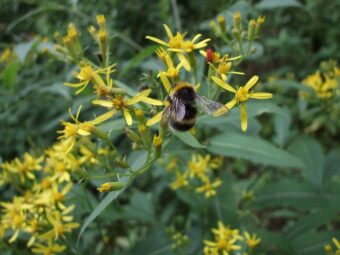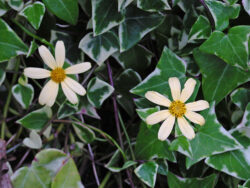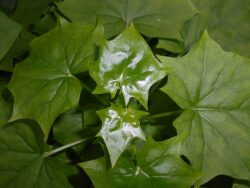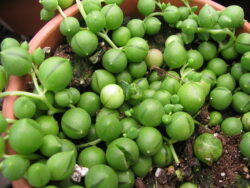In this article, we will be discussing how to get the best from your Senecio houseplants. Senecios are such a large genus with thousands of different varieties of them, where some are classed as succulents.

Most are known as outdoor species, with some of them are the familiar yellow-flowering weeds you see in the garden. They are interesting plants with some of them trailing over the ground, whilst others are shrubby plants. The annual species are often grown outdoors and not suitable to be grown indoors.
In this article, we will look at the indoor varieties that are suitable to be grown, how to get the growing conditions right and generally how to look after them.
Senecios are happy to grow outdoors in warm climates but in more temperate climates, some of the more attractive plants are best grown as indoor plants.
Most like Senecio vulgaris, the Groundsel or Ragworts are weeds that you often see on the roadside, but the ones inside are more special than those that are found outside. The trailing varieties are these tough plants and generally grown on high in a hanging basket where their beauty can be admired at eye level.
Most of the Senecio that you see in the UK produces bright yellow, daisy-like flowers but apart from a few they are mostly pests.
THERE ARE SUCCULENT TYPES AND TRAILERS
The succulent-type Senecios are popular but the trailers are grown in many homes as well.
One thing that must be noted is that Senecio plants are toxic, and over a long period of time and a large amount of exposure can cause liver failure.

If you are working with your Senecio houseplants, wear gloves to prevent the sap it produces from causing a severe allergic reaction.
The two main Senecio varieties S. macroglossus and S. mikanioides are useful foliage plants in the home. The leaves are similar to ivy, but they can take a warm or centrally heated home. What is found with these species is that it also produces attractive pale yellow, daisy-like blooms that appear in summer and occasionally in winter.
GROWING SENECIOS SUCCESSFULLY
LIGHT
Senecios like to be grown in bright, filtered light as direct sunlight can damage the leaves, especially if they are variegated. Senecio rowleyanus prefers to be grown in bright light.
TEMPERATURE
Most Senecios like to be grown in average temperature but greater than 10 degree Celsius, especially in winter. They do not need high temperatures at all to do well, but for Senecio rowleyanus will need the temperature to be higher. Keep the plants away from cool draughts.
WATERING
This is one plant that likes to be watered during the growing season, where it is good to keep the Compost slight moist. With Senecio rowleyanus, you need to water and allow the compost to dry out between waterings. In winter water sparingly but always keep the compost slightly moist, the succulent Senecios need to be potted in free-draining composts, otherwise, it will cause root rot.
HUMIDITY
During the growing season, you will need to mist regularly to keep the humidity high as this will prevent the leaves from turning brown. The succulent Senecios do not require too much humidity, so do check before you mist your Senecio.
FERTILIZING

Senecios do not need much in the way of fertilizing, only once or twice during the growing season from spring to summer. Too much will encourage the plant to grow spindly, which you do not want. The succulent Senecios, on the other hand, needs to be fed once every month with a suitable liquid houseplant Fertilizer.
Generally, the plants tend to be pest and disease resistant and so an easy plant to look after.
VARIETIES TO GROW
The following are my recommended varieties of Senecio to grow indoors as houseplants, as they will certainly brighten up any home:
SENECIO MACROGLOSSUS (Cape Ivy)
It is better to get the variegated form as it is more attractive. It is a vigour climber that has ivy-like leaves. The leaves have a waxy sheen that completes the green and gold variegations, the leaves look special but the small clusters of yellow or yellow/white flowers appear in late winter to spring to complete the look.
Grows greater than a man’s height. One plant that does not like it to be dry at the roots, which could cause dramatic leaf shedding. Does best in fairly large pots.
SENECIO MIKANIOIDES (German or Polar Ivy)
Similar to S. macroglossus but the leaves are more sharply pointed and they are borne on very long stalks. This vigorous climber produces yellow scented flowers that appear in large clusters in winter. Must be grown up stout stakes that can take the weight of the vine. Erratic growing conditions will result in leaf shedding and no flower production.
SENECIO ROWLEYANUS (String of Beads)

This elegant trailer with a mat-like habit has long thread-like stems that have bead-like, smooth leaves. What makes this plant even better is the bright, white flowers that appear in autumn and are scented. In general, an easy plant to look after if you are prepared to put the effort in.
CONCLUSIONS
In this article, we have discussed the best way to grow your houseplant Senecios. As you can see they are not difficult to grow as long as you meet the growing conditions. A plant that does not like the roots to be either too moist or too dry, as this can lead to root rot and premature leaves dropping respectively.
This is one plant that every houseplant enthusiasts should grow, especially if you have a vacant spot in the need of an elegant plant that can grow to great heights.
If you have any questions or comments that you have in growing Senecios as houseplants, please do not be afraid to contact me by using the comment box below.
Happy Senecio growing.
